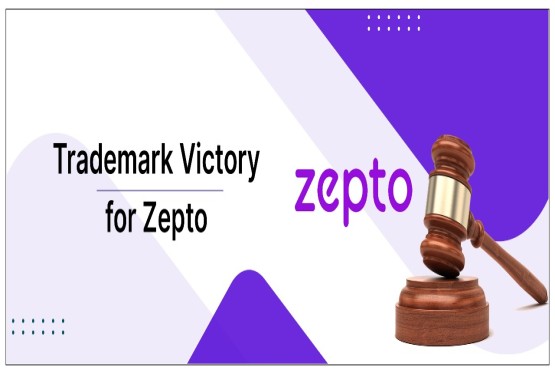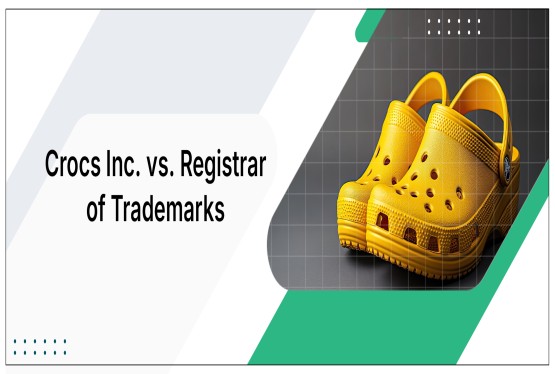Power of Attorney (POA) is a legal document that grants an individual or entity the authority to act on behalf of another person or organisation in legal, financial, or business matters. In the context of trademark filing, a Power of Attorney plays a crucial role in authorizing a representative, typically a trademark attorney, to file and manage trademark applications and proceedings on behalf of the trademark owner.
Trademark filing involves the process of registering a trademark, which can be a word, phrase, symbol, design, or combination thereof, to distinguish the goods or services of one business from those of others. This registration provides legal protection and exclusive rights to use the trademark in connection with specific goods or services, enhancing brand recognition and preventing unauthorized use by competitors.
Understanding Power of Attorney in Trademark Matters
When it comes to trademark, a Power of Attorney (POA) serves as a legal document that authorizes a designated individual or entity, usually a trademark attorney, to act on behalf of the trademark owner. This authorization empowers the appointed representative to undertake various tasks related to trademark registration, enforcement, and protection.
In the context of trademark registration, a POA allows the trademark attorney to file and manage trademark applications with the relevant trademark office. This includes preparing and submitting necessary documents, responding to office actions, and representing the trademark owner throughout the registration process.
Moreover, in trademark enforcement and trademark protection matters, a POA enables the designated representative to take legal action against infringing parties, enforce trademark rights, and defend against unauthorized use or infringement.
The POA also facilitates communication between the trademark owner and the trademark office or third parties involved in trademark-related proceedings. It grants the appointed representative the authority to correspond, negotiate, and enter into agreements on behalf of the trademark owner, streamlining the management of trademark affairs. Overall, a Power of Attorney in trademark is essential for granting legal authority to a representative to act on behalf of the trademark owner, ensuring efficient and effective management of trademark rights and protection.
Essentials of Power of Attorney for Trademark Filing
In trademark filing, a Power of Attorney (POA) serves as a foundational document that carries significant weight in authorizing a representative to act on behalf of the trademark owner. Here are the key essentials to consider when drafting and utilizing a Power of Attorney for trademark filing:
-
Clear Authorization: The POA should clearly state the authority granted to the appointed representative, specifying the scope of activities they are authorized to undertake on behalf of the trademark owner. This includes tasks such as filing trademark applications, responding to office actions, and representing the trademark owner in trademark-related proceedings.
-
Identification of Parties: The POA should accurately identify both the trademark owner and the appointed representative, providing their full legal names, addresses, and contact information. This ensures clarity regarding the parties involved and their respective roles in trademark matters.
-
Specificity of Purpose: The POA should expressly state its purpose, indicating that it is specifically intended for trademark filing and related activities. This helps avoid ambiguity and ensures that the authority granted is limited to trademark matters only.
-
Duration and Revocation: The POA should specify the duration of its validity, outlining the period during which the appointed representative is authorized to act on behalf of the trademark owner. Additionally, provisions for revocation or termination of the POA should be included to allow the trademark owner to revoke the authority granted at any time.
-
Legal Formalities: The POA must comply with legal formalities and requirements applicable in the jurisdiction where trademark filing is intended. This may include notarization, witnessing, or specific language requirements to ensure the validity and enforceability of the POA.
-
Signature and Execution: The POA should be signed and executed by the trademark owner in accordance with legal requirements. Additionally, it may require signatures from witnesses or notarization.
By adhering to these essential elements, trademark owners can ensure that their Power of Attorney for trademark filing effectively authorizes a representative to manage trademark matters on their behalf, providing clarity, validity, and legal enforceability.
Trademark Registration with Power of Attorney
Appointment of Representative: The trademark owner executes a Power of Attorney, authorizing a designated representative to handle trademark registration matters. This document specifies the scope of authority granted to the representative and may include tasks such as filing the trademark application, responding to office actions, and representing the trademark owner in proceedings before the trademark office.
Preparation of Trademark Application: The appointed representative, guided by the POA, prepares the trademark application in accordance with the requirements of the relevant trademark office. This includes providing accurate details about the trademark, its owner, and the goods or services associated with it.
Filing the Trademark Application: With the authority granted by the POA, the representative files the trademark application with the appropriate trademark office. The application is submitted along with the necessary documentation and payment of filing fees.
Response to Office Actions: If the trademark office issues any office actions or objections during the trademark examination process, the appointed representative, acting on behalf of the trademark owner, responds to these communications. This may involve providing additional information, clarifications, or arguments to overcome objections raised by the trademark examiner.
Publication and Opposition: After successfully replying to any office actions, the trademark application is published for opposition. During this period, third parties have the opportunity to oppose the registration of the trademark. The appointed trademark attorneys look into the publication and handle any trademark opposition proceedings on behalf of the trademark owner.
Registration and Certificate Issuance: If no oppositions are filed or successfully overcome, the trademark is registered by the trademark office. The appointed representative receives the trademark registration certificate on behalf of the trademark owner, confirming the registration of the trademark.
Legal Implications of Power of Attorney in Trademark Affairs
The legal implications of Power of Attorney (POA) in trademark matters are significant, as this document serves as the foundation for authorizing a representative to act on behalf of the trademark owner. Through the execution of a POA, a trademark attorney, is legally empowered to undertake various trademark-related activities on behalf of the owner, including filing trademark applications, responding to office actions, and representing the owner in trademark proceedings. This establishment of an agency relationship between the trademark owner (principal) and the appointed representative (agent) under agency law dictates that actions taken by the representative in accordance with the POA are legally binding on the trademark owner. It is essential for the POA to clearly describe the extent of the representative's authority to avoid uncertainty or disputes regarding the scope of their powers. While a representative acts on behalf of the trademark owner under the authority of a POA, the owner remains ultimately responsible for the actions and decisions of the representative. This means that the trademark owner may be held liable for any acts or omissions of the representative within the scope of their authority. Additionally, the trademark owner retains the right to revoke or terminate the authority granted by the POA at any time, provided that proper procedures for revocation are followed, thereby terminating the agency relationship between the owner and the representative. Overall, the legal implications of Power of Attorney in trademark affairs shape the relationship between the trademark owner and their appointed representative, establishing the framework for effective management of trademark rights and protection. It is crucial for trademark owners to carefully consider the implications of executing a POA and to ensure that they work with qualified and trustworthy representatives to safeguard their interests in trademark matters.
Revoking or Amending Power of Attorney in Trademark Filings
Revoking or amending a Power of Attorney (POA) in trademark filings is a significant legal action that trademark owners may undertake to modify or terminate the authority granted to their appointed representatives. Here's how the process typically unfolds:
Revocation:
-
Notification: The trademark owner initiates the revocation process by notifying the appointed representative of their decision to revoke the POA. This notification should be in writing and clearly state the intent to revoke the authority granted to the representative.
-
Formal Documentation: The trademark owner prepares a formal revocation document, clearly stating the revocation of the POA and providing details such as the names of the parties involved, the date of revocation, and the scope of the revocation.
-
Delivery: The revocation document is delivered to the appointed representative through a reliable method, such as certified mail or personal delivery, to ensure proper receipt and acknowledgment of the revocation.
-
Record-Keeping: The trademark owner retains a copy of the revocation document for their records, documenting the revocation of the POA and ensuring clarity regarding the termination of the agency relationship.
Amendment:
-
Notification: Similarly, if the trademark owner wishes to amend the existing POA rather than revoke it entirely, they must notify the appointed representative of the proposed amendments.
-
Agreement: The trademark owner and the appointed representative mutually agree to the proposed amendments to the POA. This may involve negotiating changes to the scope of authority granted to the representative or clarifying any ambiguities in the original POA.
-
Formal Documentation: The parties prepare a formal amendment document, clearly stating the agreed-upon amendments to the POA and providing details such as the names of the parties involved, the date of the amendment, and the revised terms of the POA.
-
Execution: The parties sign and execute the amendment document in accordance with legal requirements, ensuring that all necessary formalities are observed to validate the amended POA.
-
Record-Keeping: Both parties retain copies of the amendment document for their records, documenting the agreed-upon changes to the POA and ensuring clarity regarding the updated terms of the agency relationship.
The Trade Mark Agent or Attorney is changed in the Trademark E-Register by filing a TM-M form with adequate fee.
By following these steps, trademark owners can effectively revoke or amend a Power of Attorney in trademark filings, providing clarity and legal validity to the modifications made to the authority granted to their representatives. It is essential for trademark owners to carefully consider the implications of revoking or amending a POA and to ensure compliance with applicable legal requirements throughout the process
CONCLUSION
In conclusion, when it comes to trademark matters, a Power of Attorney (POA) is a significant decision. It's like handing over the legal keys to someone else, allowing them to act on your behalf. Whether you're cancelling or amending the POA, doing it right is crucial. This ensures everything stays legally sound and straightforward. By grasping these basic steps, you safeguard your trademarks and ensure seamless operations. While the process might seem complicated, trademark experts can help make it easier.

_crop6_thumb.jpg)




























_(b)_of_the_Trademark_Act,_1999_(1)_crop10_thumb.jpg)



_crop10_thumb.jpg)




























_crop10_thumb.jpg)






_crop10_thumb.jpg)








_crop10_thumb.jpg)
_crop10_thumb.jpg)



_crop10_thumb.jpg)





























_crop10_thumb.jpg)

















_crop10_thumb.jpg)






_crop10_thumb.jpg)












































































































































_crop10_thumb.jpg)




































_crop10_thumb.jpg)












_crop10_thumb.jpg)






















